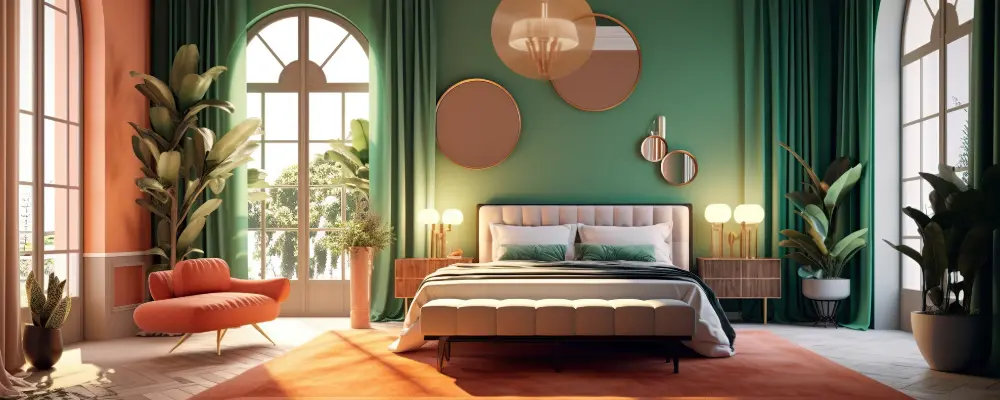Colours play a very vital role in enhancing the appearance of spaces. Colour schemes in turn add to the schema experienced in the rooms. The mundanity of these colours might act as boredom. So, it is an important task to choose colour schemes which suit the owner in best way.
Bedrooms are an essential part of the house where your days begin and end. Colours which you see while waking up and sleeping do have a hard impact on your psychology. Moreover, these colours also affect your mood, temperature of room, eyestrains and even the size of the room. While some colour schemes can be used to make a large room look smaller, other can be used to make a small room look enarged.
Warm colour schemes
Do you have an extremely cool and dark bedroom lacking natural light? Then warm colour would be the best to lighten up your room. Warm colours like red, orange, yellow, bold pink usually feel more welcoming and inviting. A darker colour with warm undertones can also be used to make large rooms feel cosier. Moreover, these tones also provide an active environment, so if you want to elevate a dull mood this colour scheme works perfect. Paleness of a north facing room can be turned brighter by using softer warmer shades.
Cool colour schemes
For rooms with heating issues may be due to direct sunlight or the location of the place, cool colours would absorb heat and make it quite cool. Shades of blue, violet, and green bring an essence of calmness and serenity. If the rooms are pretty small, then you can use cool colours to expand the space and make it feel larger. A cool colour scheme is extremely soothing to eyes and is an utter match for aggressive moods. South-facing rooms with harsh lights can also be toned down with cooler colours.
Monochromatic colour schemes
A monochromatic scheme uses varying tones of a single colour to give an elegant. Colours like white, beiges and greys are usually used in this scheme. A proper amount of variation in the tones and use of textured elements is important in order to prevent the room from becoming boring and bland. So, if you have small bedrooms, then monochromatic colour schemes will prove successful in obtaining sophistication and spacious effect.
Monotone colour schemes
Monotone colour schemes utilize the use of a single colour in enlarging small bedrooms. Usually, the colour white goes hand in hand with little or no variations in the tone of various elements in the room. It is accompanied mostly with wooden flooring to provide an enhanced effect to the monotonous colour scheme.
Neutral colour schemes
Pastel colours usually constitute neutral colour schemes. They provide a classy and soothing environment. Earthy tones or greener tones work best for the eyes. These are most preferred colours used at homes. A combination of dark and lighter tones of neutral colours avoids blandness and converts the room into a relaxing and tranquil space.
Contrast colour scheme
An unusual combination of colours from various pallets or colour schemes would be a thrilling experience. It would completely transform the bedroom into a space with interchanging emotions. A contrast between warm colours like red and monotonous white would come out to be really classy. You can even use a combination of neutral pastels and darker cool colours to break the simplicity and cause the visual flow of attention to every corner of the room. The contrast in colours is not only an overwhelming experience but also seems to be inviting, energizing and pleasant at the same time.
Colour schemes for bedrooms highly depend on individual choices and preferences. Ultimately, the different shades and colour combinations of wall paint and fabrics must fit in perfectly giving you the desired feelings.

